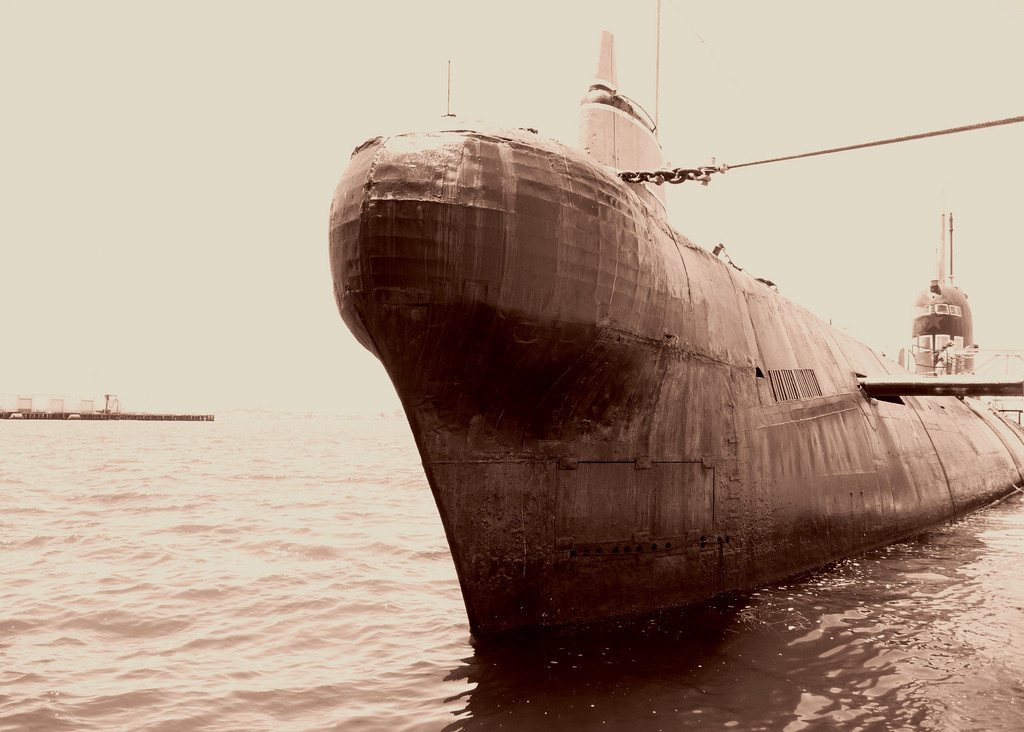

Last weekend, news broke that the Swedish navy was conducting a search for a Russian submarine inside Swedish waters. Unnamed sources told Swedish newspapers that the search was launched after the interception—presumably by the Swedish signals intelligence service, the FRA—of a Russian language distress call and apparent responses from Kaliningrad, Russia, home to a Russian naval base. The Swedish government also released a photograph that showed something in the water, but it was not clear what. As of this writing, the search continues and word has come out that this is not the first such incident in recent years. Meanwhile, of course, the Russian Defense Ministry flatly denied it all saying “There has been no irregular situation, let alone emergency situation, involving Russian navy vessels.”
Perhaps it was only a matter of time before something like this happened. After all, Russia has recently shown little consideration for international borders, swallowing significant pieces of Ukraine, kidnapping an Estonian intelligence officer, and violating Finnish, Estonian, and Swedish airspace. In 2013, the Russian Air Force even simulated bombing attacks on targets in the Stockholm area.
In addition, Sweden has a track record of claiming clandestine violations of its waters by the Soviet and Russian navies. The Soviets were caught with their fingers in the cookie jar once. On October 27 1981 in the famous “Whiskey on the Rocks” incident, a Soviet Whiskey-class submarine ran aground deep inside Swedish waters right in the open air where any Swedish news outlet could film it for the price of a chartered airplane. It stayed there for an embarrassing week and a half. However, during the 1980s and well into the 1990s, the Swedes investigated innumerable other reports of submarines, frogmen, and underwater vehicles in their waters. Hard proof, however, was always frustratingly elusive. The first commission to investigate the question, appointed by then Swedish Prime Minister Olof Palme, reported in April 1983 that the alleged incursions had really taken place and that the Soviet Union was to blame. These findings were controversial, to say the least, and over the years, skepticism grew.
In 2001, with the Cold War safely over (everyone thought), the Swedish government commissioned another study of the question, this time led by the eminent Swedish diplomat Rolf Ekeus. Thanks to the Parallel History Project, the English language executive summary of the Ekeus Commission’s report is available in full-text. (The Swedish full-text is here.) The Commission concluded that many of the claimed incursions were genuine but left open the question of what state had been behind them, raising the possibility that NATO nations may have been to blame. It also criticized the Swedish government over its years for mishandling of evidence and a flawed analytic process. Then in 2004, a Swedish scholar (published a book in English with a major and respectable national security publishing house blaming the United States and Britain. (In later years the scholar was active in the 9/11 truther world and insinuated that Israel was behind the Breivik shootings in Norway.) Not surprisingly, critics (and behind pay wall here and here) argued out that the scholar based his findings on questionable documents, unreliable oral testimony, and flawed methodologies. To this day, the mystery remains unsolved and the debate has been irrevocably poisoned by wild claims similar to those that fly with regard to Ukraine today.
These are murky waters, to say the least. We may never know what really happened off the Swedish coast during the 1980s and 1990s and if history is any guide, we may never who what really happened in the current incident. One thing is clear, however: Russia has more than adequate plausible deniability for doing whatever it wants in Swedish waters as long as it avoids another “Whiskey on the Rocks” incident.
Mark Stout is a Senior Editor at War on the Rocks. He is the Director of the MA Program in Global Security Studies and the Graduate Certificate Program in Intelligence at Johns Hopkins University’s School of Arts and Sciences in Washington, D.C.
Photo credit: Herb Neufeld
